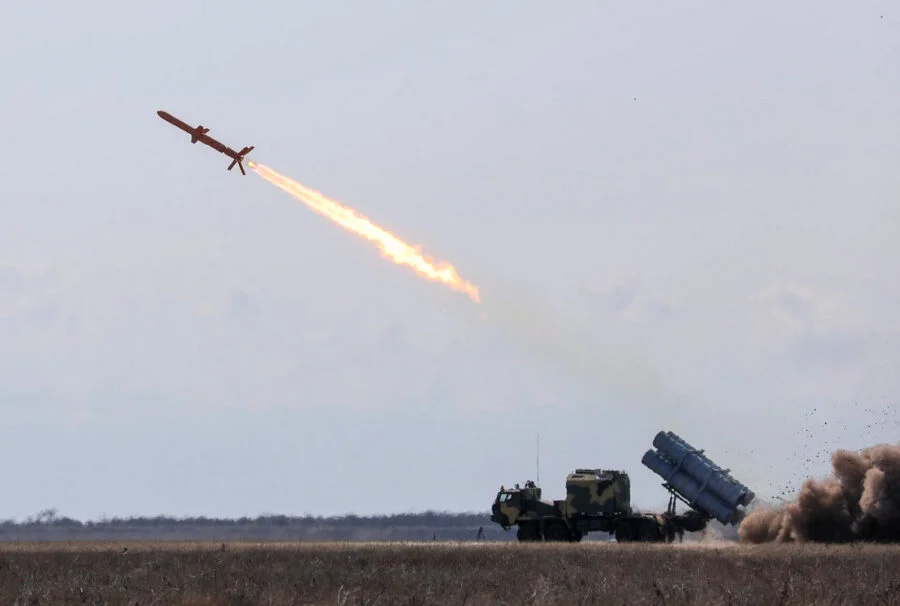On August 2, 2024, Romania and Ukraine unveiled a strategic plan to jointly manufacture and upgrade the R-360 Neptune anti-ship missiles, marking a significant step in their defense cooperation. The announcement underscores the growing importance of the military-industrial partnership between Bucharest and Kyiv, especially in light of ongoing regional security challenges. During his recent visit to Romania, Ukrainian diplomat Igor Prokopchuk emphasized the dual significance of this collaboration, highlighting its potential impact on both defense and energy sectors. Romania, seeking to fortify its position in the Black Sea, views Ukraine as a crucial ally in controlling maritime domains from its territory. This partnership is seen as pivotal for the post-war period, despite the ongoing uncertainties surrounding Ukraine’s ability to withstand current conflicts.
R-360 Neptune is a Ukrainian subsonic cruise missile with all-weather capabilities developed by the Luch Design Bureau in Kyiv as an anti-ship missile, with a later variant for land attack. Neptune’s design is based on the Soviet Kh-35 subsonic anti-ship missile, with substantially improved range, targeting and electronics equipment. It has a range of over 200 kilometres. The system requirement was for a single missile to defeat surface warships and transport vessels with a displacement of up to 9,000 tonnes, either in convoys or moving individually. The first training missile divizion (battalion) entered service with the Ukrainian Navy in March 2021, with the first operational naval use in 2022. The land-attack variant has a new guidance system and was first fielded and used in 2023.

When deployed, a Neptune coastal defence system comprises a truck-based USPU-360 mobile launcher, four missiles, a TZM-360 transport/reload vehicle, a RCP-360 command and control vehicle, and a special cargo vehicle. Czech Tatra T815-7 trucks replaced prototype KrAZ vehicles. The system is designed to operate inland up to 25 kilometres (16 mi) from the coastline. A Neptune missile including rocket motor is 5.05 metres (16 ft 7 in) in length, with a cross-shaped hard wing. Neptune missiles are designed to be housed in transport and launch containers with dimensions 5.3 by 0.6 by 0.6 metres (209 in × 24 in × 24 in). The system has a maximum range of about 300 kilometres (190 mi). A single missile weighs 870 kilograms (1,920 lb), of which 150 kilograms (330 lb) is the warhead. It uses a Motor Sich MS400 engine which has a high thrust-to-weight ratio.
On 13 April 2022, Ukrainian sources claimed the Russian cruiser Moskva was hit by two Neptune missiles, resulting in a fire and subsequent explosion of a shipboard ammunition store. Russia reported the vessel as still being afloat later in the day of the fire, but Russian state media subsequently reported that she had sunk in inclement weather while being towed. The successful use of the Neptune system to sink the warship was cited by Ukrainian Defence Minister Oleksii Reznikov as giving confidence to Ukraine’s allies that more weapon supplies to Ukraine would be worth it. On 23 August 2023, according to Ukrainian media reports, a modified R-360 missile was used to help destroy a S-400 missile system radar. On 14 September, Ukrainian forces subsequently claimed to have destroyed S-400 missile systems near Yevpatoriya using drones and Neptune missiles. On 26 March 2024, Ukraine claimed to have struck the Konstantin Olshansky with a Neptune missile.
















